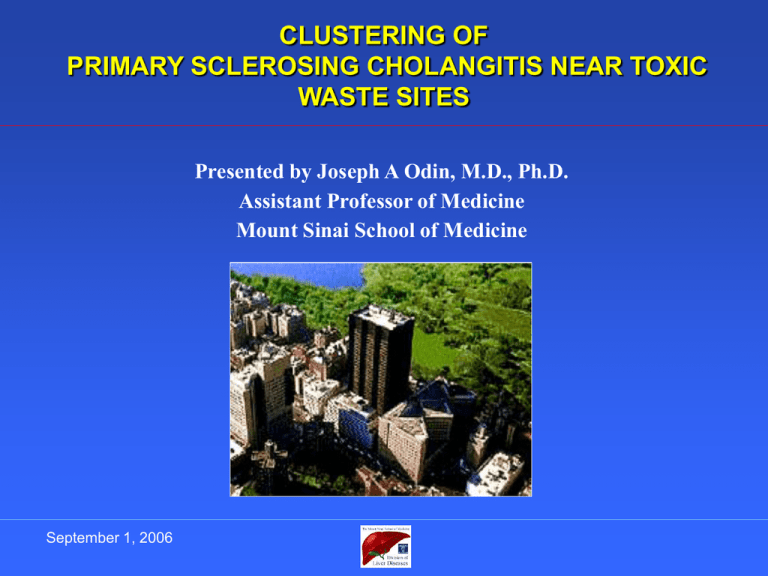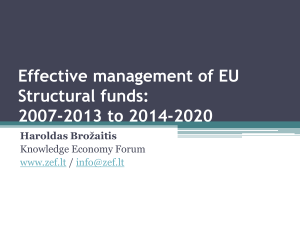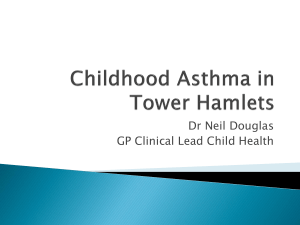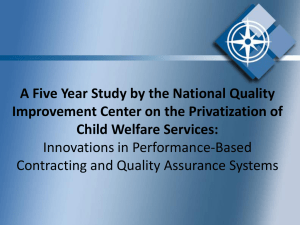Clustering of PSC near hazardous waste sites by
advertisement

CLUSTERING OF PRIMARY SCLEROSING CHOLANGITIS NEAR TOXIC WASTE SITES Presented by Joseph A Odin, M.D., Ph.D. Assistant Professor of Medicine Mount Sinai School of Medicine September 1, 2006 I have nothing to disclose and my presentation will not include discussion of off-label/investigative use or application of a product or device September 1, 2006 Pathogenesis of Primary Sclerosing Cholangitis Animal Immune Environmental Genetic Primary Sclerosing Cholangitis Susceptibility Factors Dysregulation Models September 1, 2006 PSC is prevalence poorly studied – Boberg et al, 2001 report the prevalence of PSC is increased in Scandinavia, but the cause is unclear. – Very difficult to know if prevalence differences with regard to race, familial incidence, geography are environmental, societal, or genetic in origin. – In animal models, toxin exposure may induce PSC-like peri-biliary inflammation and fibrosis. September 1, 2006 PSC-like Animal Models – Direct toxin-mediated biliary injury or murine GVHD models result in PSC-like lesions. – Mdr2(-/-) knockout mice- leakage of bile through disrupted tight junction leads to a pro-inflammatory/fibrotic cascade. No known mutations of the human homologue of Mdr2 (MDR3). – Dextran sulfate sodium (DSS) treated CFTR(-/-) KO mice develop colitis and biliary inflammation. – Murine bacterial overgrowth or LPS in immuno-deficient mice may cause peribiliary inflammation. Vierling, JM, 2003. Liver Immunology. Review. September 1, 2006 Autoimmune diseases have been associated with toxins or xenobiotics Reprinted from Selmi et al, 2004, Epidemiology and pathogenesis of primary biliary cirrhosis September 1, 2006 Studies of disease prevalence have shown geographic variability in PBC Author(s), year Geo. clustering #cases Yes 34 Sheffield, U.K. No (seasonal?) 117 northeast England Triger et al, 1984 Yes 552 Western Europe none Borda et al, 1989 Yes 50 Navarra, Spain none Danielsson et al,1990 Yes 111 northern Sweden none Myszor et al, 1990 No 347 northeast England Witt-Sullivan et al, 1990 No 225 Ontario, Canada Yes 770 northeast England Triger, 1980 Hamlyn et al, 1983 Prince et al, 2001 Site Factor water? (sunlight) urban Studies of immigrants suggest environment affects the prevalence of PBC (Watson et al, 1995 & Anand, 1996) September 1, 2006 Pathogenesis of Cholestatic Liver Disease • Certain toxins are known to cause secondary sclerosing cholangitis in individuals, but naturally history may be different than PSC. • Question: Do unrecognized environmental toxins trigger PSC or PBC in genetically susceptible individuals and/or promote disease progression? September 1, 2006 Possible Approaches to Identifying Pathologic Toxins • Epidemiological studies – Questionnaires regarding exposures – Prevalence/Cluster analysis and geographic information systems (GIS) technology • Further studies in animals exposed to toxins • Tissue analysis – Accumulated toxins may be detected in adipose tissue – exposure upregulates expression of certain genes (e.g. MDR, cytochrome p450 genes). September 1, 2006 What is GIS? • Geographic Information Systems (GIS)- “a structural approach to collecting, archiving, analyzing, manipulating, and displaying data having one or more spatial components, using a combination of personnel, equipment, computer software, and organizational procedures.” (National Research Council) • “Layers” of spatial data are combined on the same projection or map. Often unsuspected patterns that escape detection in tabular reports are identified by projection. (e.g. higher cervical cancer rates in mountainous rural areas and observation of increased lung tumors in port cities helped establish asbestos exposure in shipyards as a risk factor). • For health studies the combined layers may include a digital photograph of the area under study, administrative boundaries (e.g. postal codes), environmental layers (e.g. contaminated areas), facility locations (e.g. hospitals), subject locations (e.g. patient residences). • Each of these spatial layers can be linked by a unique identifier to attribute data (i.e. clinical data or demographic data). This linkage gives GIS its analytical power. September 1, 2006 GIS STEPS 1. Organize a team of individuals committed to the study including clinicians, epidemiliogists, data entry specialists and spacial statistician. 2. Identify study subjects and environmental points of interest and collect address locations. 3. Geocoding of address information-conversion to longitude and latitude. Best if done immediately when address supplied since administrative boundaries change over time. Collecting all lifetime addresses preferable. 4. Mapping of prevalence rates in different areas (e.g. postal codes)- adjust rates to control for potential confounders such as differences in age, gender, and race distribution among different areas. Confidence levels for each rate should be included. 5. Pattern analysis-spatial statistical methods may be helpful in providing a quantitative answer if not obvious from mapping. September 1, 2006 Step 1- A team approach • Interested clinicians- Aftab Ala and Nancy Bach • Spatial statistician- Sylvan Wallenstein • Epidemiologist/data entry specialist“Carmen Stanca” • Substitute- Joseph Odin September 1, 2006 Step 2. Recommended guidelines for identifying subjects • stringent case inclusion criteria; • definition of date of disease onset; • well-defined study period, area and population; • multiple case finding methods; • rigorous tracing of all possible cases. Metcalf, J. & James, O., Semin Liver Dis, 1997 September 1, 2006 Step 3. Address geocoding-converting addresses into map locations Software loaded with georeferenced files can automatically convert appropriately formatted street addresses if available into specific longitudes and latitudes. Confidentiality must be maintained however. Data Quality Issues: • Who- best if patient provides address as opposed to insurance data. • What- street mail address of residence preferred since offers the smallest point of reference. • When- address at diagnosis usually best for most studies. An important point is to be consistent and note each factor along with the address data. Spot checks of data accuracy essential. September 1, 2006 Available U.S. Liver Disease Clinical Databases 1. Individual medical center patient databases. 2. Independent laboratory records. 3. Veterans hospitals records. 4. OPTN (Organ Procurement and Transfer Network) data on patients listed for liver transplantation. 5. Nascent international multi-center PSC and PBC registries. September 1, 2006 OPTN database • OPTN data limits referral bias as compared to individual medical centers. • Demographic information restricted to time of listing and is not updated. • Limited subset of patients are listed based on clinical and non-clinical status. • Accuracy of data is uncertain. September 1, 2006 OPTN database • 102 individuals residing in the NY metropolitan area with a diagnosis of PSC and 127 individuals with PBC were listed in the OPTN database between 1995 and 2003. September 1, 2006 Long Natural History May Distort Analysis of Subject Spatial Data Carcinoma/Death Progression (diagnosis) 10-30 yrs? Normal liver (disease onset) Figure adapted from SL Friedman, MSSM September 1, 2006 Cirrhosis (listing) Transplantation Step 4. Prevalence Data Adjustment • Demographic data available for all listed PSC and PBC patients living in New York State and US census data for individual zip codes was used to standardize expected prevalence rates for each New York City zip (postal) code. • Observed/stdexpected prevalence rates were mapped for each zip code with darker colors indicating higher rates. • There was no difference in confidence levels for each value. September 1, 2006 Calculating and Standardizing Prevalence Ratios by Zip Code • The expected prevalence of patients listed for transplant with PBC or PSC was based on overall data for UNOS region 9 (New York State and Vermont) from 2000 to 2004. Female 86% Male 14% • 35-49yr 55% White 86% Other 5% Asian 2% Black 7% 50-64yr 13% 18-34yr 19% <18yr 0% 65yr+over 13% Using the 2000 US census data for each zip code, we were thus able to correct for differences between zip codes with regard to population, age, gender, and race and standardize the expected prevalence rates (stdE). September 1, 2006 Step 4. PBC and PSC cluster differently PSC PBC Brooklyn Manhattan/Bronx Queens Staten Island PBC September 1, 2006 PSC Identified Toxic Sites in New York City This NY website also provides address information for each of these sites, which is more accurate than the locations shown on the map. Courtesy of the NY DEC September 1, 2006 Superfund site locations matched best with high disease prevalence areas Westchester Superfund Sites Boroughs/Counties New Jersey Queens BIGGER TRIANGLES Brooklyn Staten Is. Adapted from the New York Department of Environment 2004 Superfund Toxic Waste Sites (SFS) •SFS are sites of public health hazards that have been designated for immediate remedial action. •A recent NYC Department of Health study showed an increased cancer incidence (e.g. breast and lung cancer) in neighborhoods surrounding NYC SFS. •Vine et al, 2000, demonstrated deleterious effects on the immune system of those living near a SFS. September 1, 2006 Predominant SFS Toxins •Halogenated solvents •Heavy Metals e.g. mercury •PCE 1,1,2,2-tetrachlorethylene (dry cleaning industry, household detergents) •Methyl chloride •Lacquer •Solvents •PCB Polychlorinated biphenyls (formely used in hydraulic systems, •Trichloroethane plasticizer, textile, transformers) •Xylene •Tetrachloroethane September 1, 2006 Hypothesis The prevalence of PSC and PBC patients listed for transplantation are increased near Superfund sites. September 1, 2006 Step 5. Statistical Analysis (i) Comparison of prevalence between “grouped” zip codes with and without SFS (ii) Comparison of prevalence among boroughs and SFS density in each borough (iii) Validated computer analysis (SaTScan): a) ‘global’ clustering of patients b) ‘focused’ clustering of patients near SFS September 1, 2006 Grouped zip code comparison Each zip code and its adjacent zip codes were considered a group or ‘cluster’ SFS ‘cluster’ SFS Non-SFS ‘cluster’ September 1, 2006 The median std prevalence ratio of PBC is significantly higher in SFS clusters CLUSTERS WITHOUT SFS CLUSTERS WITH SFS P PBC 0.51 0.94 0.001 PSC 0.28 0.28 0.572 p: significance values for Mann-Whitney U test, 2-tailed Std prev ratio: observed/std expected prevalence September 1, 2006 Staten Island has the highest prevalence of PBC & the highest density of SFS NYC Borough Std Prev Ratio (rank) #SFS/100,000/sq mile (rank) Manhattan 0.66 (5) 0.0211 (5) Brooklyn 0.91 (3) 0.0411 (4) Queens 0.88 (4) 0.0561 (2) Bronx 1.02 (2) 0.0415 (3) Staten Island 1.54 (1) 0.3150 (1) September 1, 2006 SaTScan METHOD TM •Spatial analysis of the case distribution was conducted using a cluster detection spatial scan statistic, SaTScan v5.0 adjusting for the underlying background population. •Longitudes and latitudes are used •Global analysis-enter only patient lat & long (zip code center) •Focused analysis-enter patient and SFS long & lat Bernoulli and Poisson Models:Kulldorff M. A spatial scan statistic. Communications in Statistics: Theory and Methods,26:1481-1496,1997 September 1, 2006 PSC clusters Global and focused cluster analysis of PSC-OLT patients revealed statistically significant clusters: • • • one that encompassed all of Staten Island (p=0.050) a cluster in Nassau County, N.Y. that is near a known SFS (not shown). a cluster in Chicago, Illinois. We have started investigating Chicago given higher numbers of Scandinavians in that city. The cluster encompassing Staten Island encircles too many SFS to identify any specific toxin. The toxin at the Nassau County SFS included only tetrachloroethylene (PCE). However, as in Staten Island, a large county-wide active garbage disposal site is also present in this zip code. September 1, 2006 Two global clusters identified by SatScan overlap with Mount Sinai PBC patient clusters Bronx 2 19 4 New Jersey Queens BIGGER TRIANGLES Brooklyn 2 7 Nassau Active Solid Waste Site Superfund Sites Global Clusters Mount Sinai Clusters 10 Staten Is. 10 6 7 6 September 1, 2006 10 km PBC clusters identified by global analysis were not statistically significant •SFS were present within 5 out of 6 clusters, but the clusters were not statistically significant. September 1, 2006 PBC SFS-focused analysis identified two statistically significant clusters • Statistically significant SFS-focused clusters 1. Westchester (10595, 10532) r=2.67 km, p<0.05 2. Staten Is (10312, 10308) r=3.69 km, p=0.05 September 1, 2006 Staten Island SFS Toxins Number of organic compounds including: • polychloroethane (PCE), predominately • Heavy metals e.g. mercury • Solvents • Lacquer Exposure to toxins by aerosol distribution more likely since groundwater not used in New York City. Toxins may attach to particulate matter for wider distribution. September 1, 2006 Fresh Kills - Staten Island The largest land fill in the world September 1, 2006 Courtesy of the NYC DEC 2003 Related Animal Studies • We have begun to study hepatic changes in mice exposed to particulate matter air pollutants 5 hours per day/ 5 days per week for variable periods. • Early results indicate that exposure for 2+ months significantly increases hepatic inflammation with a trend towards increased fibrosis, but cholestatic changes have not been observed. • Different mice strains may yield different results. September 1, 2006 Summary • The overall prevalence of only PBC patients listed for transplant is increased in zip codes near NYC SFS. • The increased prevalence of PSC and PBC patients listed for transplantation in Staten Island corresponds to its high density of SFS • Statistically significant clustering of both PSC and PBC patients listed for transplantation occurs near SFS. September 1, 2006 Limitations • Study population -Cases that never progress beyond early stage disease are excluded. -Economics may affect both SFS location and who is transplanted. -Relatively small number of cases limited the study’s power. -The accuracy of OPTN database is unknown. • Using zip codes -Exact addresses are not available from OPTN. -Only the zip code at the time of listing for transplant is saved. • Migration -Length of time residing in given zip code prior to listing is unknown. -In NYC about 50% were living in the same house in 2000 as in 1995. September 1, 2006 Conclusion Exposure to toxic wastes may be one of the environmental factors that plays a role in the pathogenesis of PSC and PBC September 1, 2006 ACKNOWLEDGEMENTS ARTZT FAMILY PBC FOUNDATION This work was supported in part by Health Resources and Services Administration contract 231-00-0115. The content is the responsibility of the authors alone and does not necessarily reflect the views or policies of the Department of Health and Human Services, nor does mention of trade names, commercial products, or organizations imply endorsement by the U.S. Government September 1, 2006 September 1, 2006 GLOBAL SaTScan ANALYSIS TM • Most likely PBC clusters – SI (10312, 10308, 10309) r=3.44 km, p=0.17 FOCUSED SaTScan ANALYSIS TM • Most likely PBC clusters – SI (10312, 10308, 10309) r=3.69 km, p=0.05 September 1, 2006 PBC-Staten Island MOST LIKELY PBC CLUSTER September 1, 2006 Large geographical variations in disease (PBC) frequency, both between and within studies, tantalizingly suggest the presence of as-yet-unidentified risk factors. This should be further followed up with new analytical epidemiological studies. September 1, 2006 Prevalence May Vary Locally Due to Genetic or Environmental Factors 1) Genetic predisposition - Family and twin studies support a link 2) Environmental factors - Differing water supplies has been linked to local variability of PBC. (Triger et al. Br Med J. 1980) - Cross-reactivity of PBC autoantibodies with microbial protein epitopes and with autoantigen modified by environmental chemicals (xenobiotics) September 1, 2006 Xenobiotics • Xenobiotics are foreign chemicals that may alter defined selfproteins, inducing a change in the molecular structure of the native protein sufficient to induce an immune response • Association of autoimmune diseases with xenobiotics. Carpenter D.O et al. Incidence of endocrine disease among residents of New York areas of concern. Environ Health Perspect 2001. • Many xenobiotics are metabolized in the liver September 1, 2006 PBC in NYC An increased number of PBC cases noted in Staten Island. Referral bias? Manhattan Queens September 1, 2006 Bronx Brooklyn Staten Island Staten Island is home to a huge garbage dump and numerous other toxic sites September 1, 2006 Potential geoclustering of Mount Sinai patients (212) with AMA+ PBC 4 19 7 10 10 7 10 km September 1, 2006




